Everything you need to know about the herb thyme, from how to use and store it to all of its many health benefits!
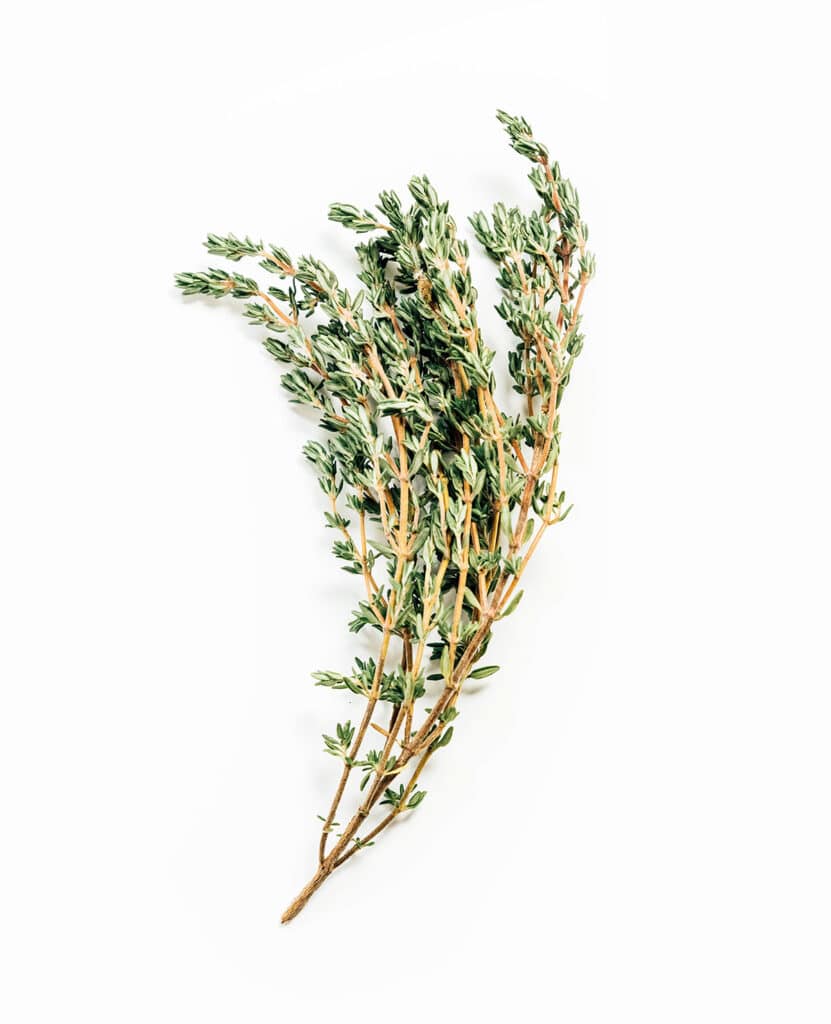
There’s an art to using herbs in cooking. To know off the top of your head which herbs will work with which flavors, well it’s a skill. And it’s one that takes some practice! Cilantro with this, dill with that… what about thyme?
Today, we’re breaking down thyme and its uses. Because unlike the oreganos and cilantros of the world, thyme just doesn’t get as much attention. Until now, that is!
What is thyme?
This herb is a twig-looking one that features a brown stem (unlike other herbs’ green stem). The leaves are small and affixed to the stems in little bunches, making it a full plant that looks like a cute little bouquet of herbs.
Thyme is like parsley in that its flavor is subtle, yet it makes a difference when added to dishes. You’ll likely find that it tastes earthy with a sort of lemony tinge. Its subtleness makes it great for adding to soups, veggie dishes, potatoes, plant-based meats, and more.
Where is thyme grown and harvested?
Thyme originally comes from the Mediterranean region. However, today you’ll find it grown and harvested worldwide, including in the states. In fact, it’s a low-maintenance herb that many find to be a great addition to their home gardens! Because it doesn’t require much water to grow, it can be neglected and still thrive. It also does well whether grown outside or indoors in a windowsill herb garden.
Unlike other herbs, this one grows particularly slowly. It can take up to three months just for the seeds to germinate. But, its low maintenance characteristics make it a favorite among gardeners. And as a bonus, bees love it!
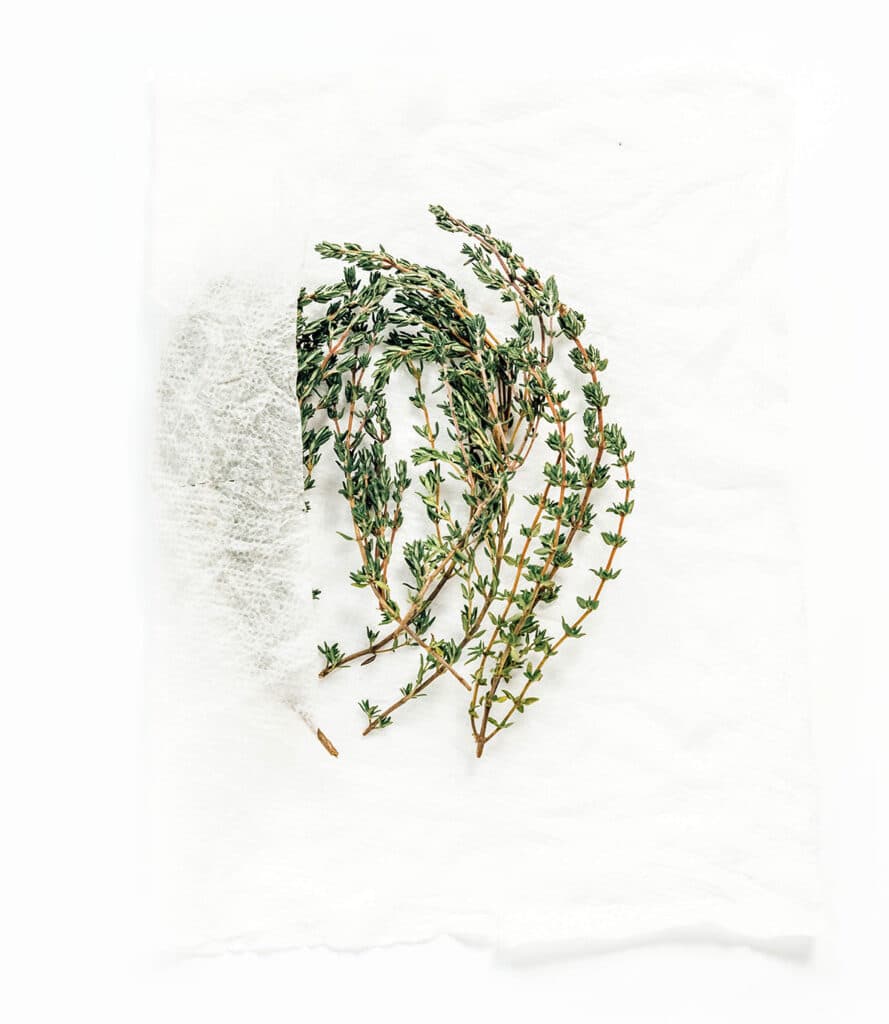
how to store thyme
To extend the shelf life, wrap thyme sprigs in a damp paper towel. Then, place the paper towel inside a sandwich baggie and refrigerate. This will help to preserve the herb and should help it last for up to 2 weeks!
If the leaves start to turn brown, you’ll need a new bunch.
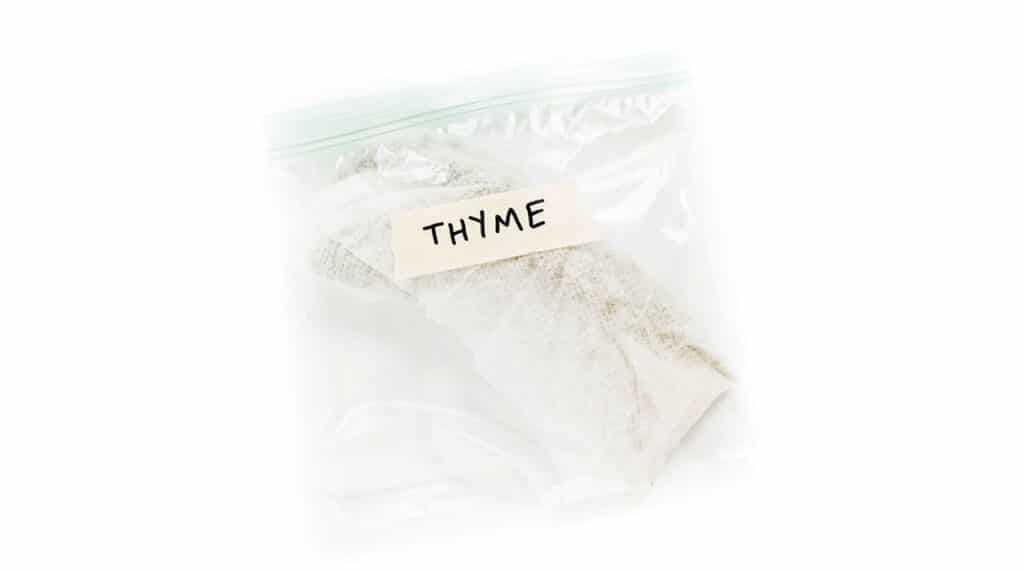
How to remove thyme leaves from the stem
If you’ve found yourself sitting there and picking the leaves off of the thyme stem 1 by 1, I can’t blame you. We’ve all been there! But, there is a crazy-easy way to make the process much more efficient.
Instead of picking off the leaves, simply grab a strainer and pull the thyme through one of the gaps in the mesh! This will pull the leaves right off and leave them in a neat little pile inside the strainer. Easy peasy!
Thyme Health Benefits
Herbs are known to be beneficial little pants, and this one is no different. The herb is a great source of magnesium, potassium, and Vitamins A and C. Its benefits include supporting digestion, immunity, and respiratory health, and it can even reduce inflammation and boost your mood! It has high antibacterial properties, which make it great medicinally (like for treating acne).
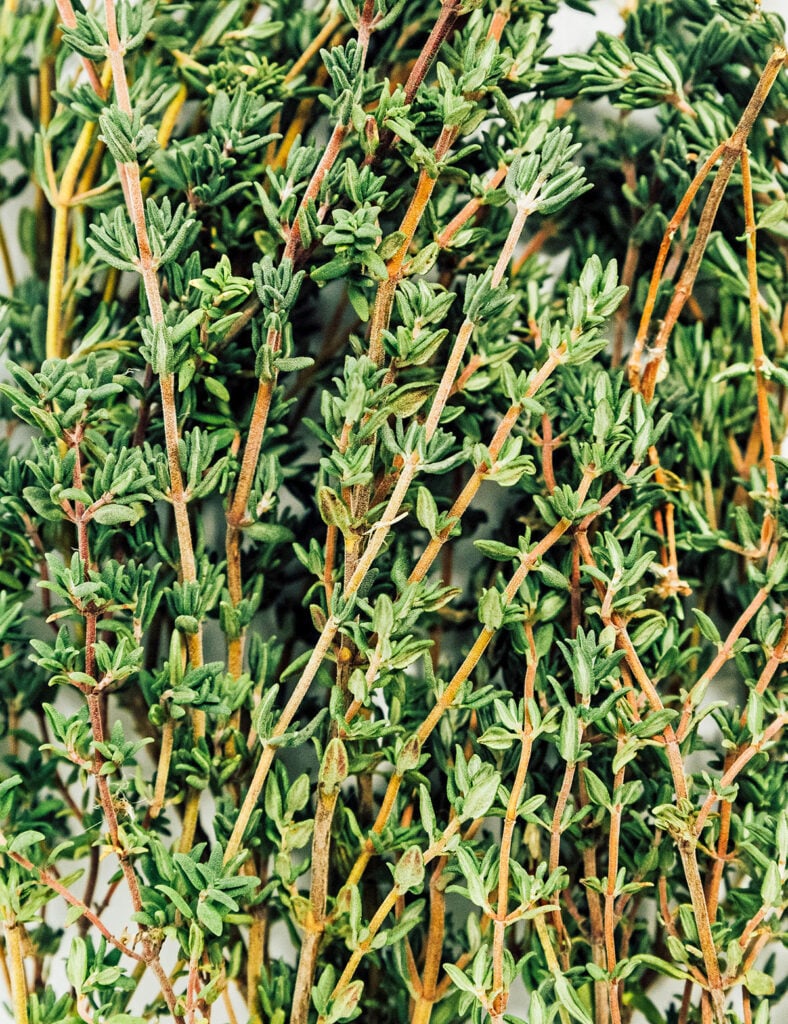
Try thyme in these recipes
Ready to give thyme a go? Try it in one of these recipes to let those flavors really shine!
- Try this Roasted Red Pepper & Strawberry Gazpacho for a deliciously refreshing bite!
- This Potato Leek Soup makes the perfect base for adding yummy thyme.
- For something hearty, try this Farro Risotto!
- Go the appetizer route with these zesty Marinated Olives.
- Thyme compliments mushrooms perfectly in this Creamy Mushroom Soup!
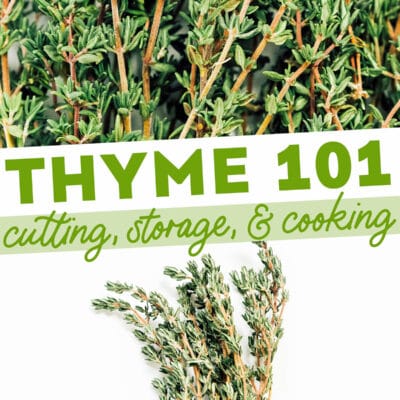



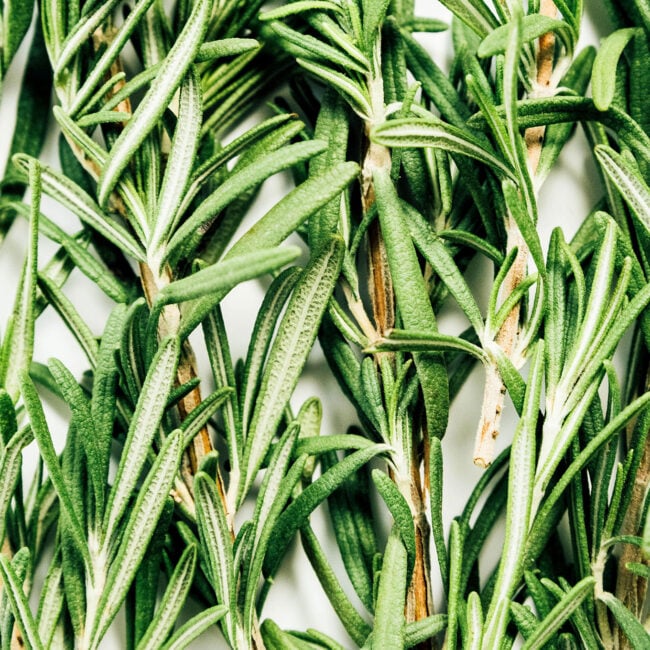
Leave a Comment